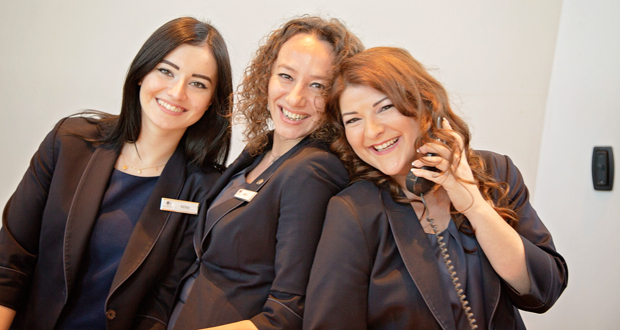
The 24/7 nature of hotels makes careers in hospitality demanding both physically and mentally. While hotel team members typically excel in this fast-paced environment, it is imperative for their overall well-being that they also take the time for self-care. In recent years, hotel companies have recognized their role in driving positive life choices and maintaining wellness in their team member communities, and have shifted toward more mindful management practices.
Creating a wellness-focused space has been where many have started. The wellness movement encompasses everything from eating habits, exercise, and mental health support, to environmental factors such as temperature, light, and air quality.
Late last year, Local Measure, a location-based social intelligence platform for hospitality and tourism, released an eBook compilation of the company’s exclusive research on wellness entitled The Business of Being Well. The publication includes the observations from top hotel CEOs and executives and recognizes that wellness is not just a trend, but a way of life. “Healthy living has now become the lifestyle expectation of the younger generation,” notes Rohit Verma, Dean of external relations at the Cornell SC College of Business and executive director of the Cornell Institute for Healthy Futures, in the eBook. “Nowhere is this more noticeable than in the hospitality industry, where operators have been forced to rethink their entire business strategies through a wellness lens.”

Not only does practicing wellness enhance employee lifestyle and performance, but, according to Jonathan Barouch, founder and CEO of Local Measure, it is also a major driver of revenue growth for hotels and the general economy. “The wellness economy now represents a $3.7 trillion industry,” he explains.
But how can established hotels drastically modify their team member management approach economically? One example involves Hilton, which, in July 2017, launched Thrive@Hilton, Hilton’s team member value proposition. Offered to team members in 5,100+ Hilton hotels around the globe, Thrive@Hilton was designed to help workers thrive inside and outside the workplace. Gareth Fox, vice president of human resources, Americas, at Hilton, stresses the importance this initiative has had on team members, guests, and the company. “Team members are our biggest asset in delivering on our mission to be the most hospitable company in the world,” he explains. “Hilton has always been a team member-centric organization, so we invest in our team members for their investment in us. When they thrive, we thrive as a company.”
Thrive@Hilton is supported by Hilton’s partnership with Thrive Global, an organization that offers companies and individuals sustainable solutions to enhance well-being through commerce, corporate actions, and content of media. Building on existing benefits, Thrive@Hilton aims to ensure that leaders and teams work smarter by leveraging time, technology, and communication in better, more effective ways.
Now that Thrive@Hilton is embedded in the business, Hilton is working tirelessly to secure better benefits and mindful practices for their team members. So far, the program has been a great success—according to results from last year’s Global Team Member Survey, 85 percent of team members view Thrive favorably. Additionally, research has shown that investing in personnel is a smart business decision. “Happiness on the job leads to improved productivity,” Fox says.
Different properties are implementing Thrive@Hilton in a myriad of ways. One hotel committed to refraining from sending internal emails on Fridays, so that team members could better connect with one another in person. Other properties have offered programs that teach team members about body language and time management. Some have created relaxation rooms that offer quiet music, magazines, refreshments, board games, and candles. A few even offer energizing workout routines.
When asked how other hotels can start their own employee wellness initiatives, Fox advises inquiring at the source. “The first step is to assess the current situation, ask for employee feedback, and listen to ways the job can be improved,” he says. “We have found that the best ideas come from within the organization and work best when executives are supportive of the effort and make the idea become a reality.”
Photos courtesy of Thrive@Hilton











